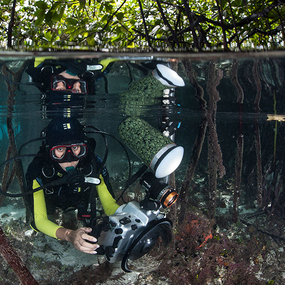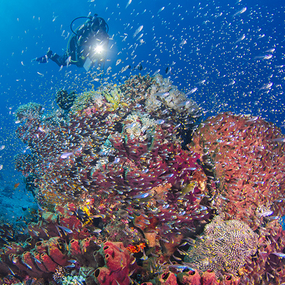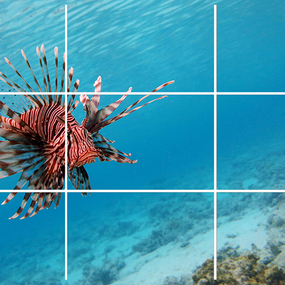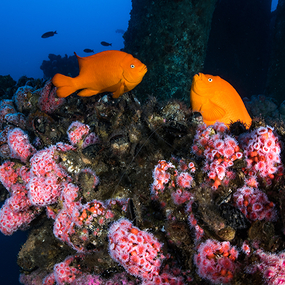Big Animals – Leopard Seals, Antarctica
|
The waters of Antarctica hover between 28–50°F and it’s going to take something pretty special to get most of us diving in that water. Well, how about the leopard seal? Sleek and beautiful, with its white-with-black-spots coat, leopard seals do have the potential to be vicious, but who doesn’t want an adrenaline-induced shot of a leopard seal biting your camera port? ANTARCTICADiving in Antarctica is not an easy (or cheap) undertaking. Drysuits are required and advanced diving experience in cold water is necessary. Make sure you know how to trigger the shutter button on your housing while wearing 7mm gloves. Not a lot is known about these seals; especially their in-water behavior and their aggressive nature can be unpredictable. It’s probably best to be cautious around feeding seals and not to put yourself between a seal and its prey. Above-water activities will provide plenty of other amazing photo opportunities as well. Recommended OperatorsWhen to DiveFrom February to March, baby penguins take to the water, making for easy meals for leopard seals. |
Pro TipsRemember, you cannot approach a leopard seal in the water—the animal needs to approach you! If the seal doesn't like you, you won't have a good interaction with it; but if it does, it could stay long enough to allow you to get amazing shots. So, never push too hard to get near the seal; just try and be in the animal’s vicinity and wait patiently for it to come to you.
When trying to capture leopard seals, I believe snorkeling is the best option, as it gives you the flexibility and available light at the surface that you need. Diving is also possible, but it forces you into deeper, darker waters and offers less maneuverability.
Don’t use strobes, unless you are very comfortable with how to avoid backscatter in water full of ice particulates—especially considering the water may be below freezing and each additional task requires a lot of energy. That aside, strobes greatly limit flexibility in the water when interacting with a very fast and dynamic animal.
Try to go in the opposite direction to the other snorkelers (while respecting the safety rules). Seals don’t like a crowd.—Bartosz Strozynski |
RELATED CONTENT
Featured Photographer







 Antarctica
Antarctica




